Rwenzori Mountains of the Moon Trek
Africa’s Amazing Secret Trek | Miss the Kilimanjaro Crowds
Although Lonely Planet has the Rwenzori trek as one of the top ten “best things” to do in East Africa, we would put it in our top three. The Rwenzori mountains, are also called the Mountains of the Moon. But they are not so much moon-like — rather they have a dizzying array of spectacular plants, trees, animals, and varied landscapes that make you aware, at all times, that you are in a place like no other on the planet. And of course, you can stand on a glacier at over 5000m (16,000 ft) with world class views of Africa below you.
Why do the Rwenzori Mountains of the Moon Trek?
The Rwenzori Mountains are the highest mountain range in Africa and have the third highest peak (Mt. Stanley, 5109m). They contain a vast array of plants, animals, and birds. Six different climate zones were traversed during our trek in January, 2022 over the course of eight days climbing to the top of Mt. Stanley (called Margherita Peak). Forest Elephants, leopards, giant forest hog, deer including endangered Rwenzori black-fronted or red duiker, a number of primates such as blue monkeys, Angola colobus monkey, black-and-white colobus, l’Hoest’s monkeys and Chimpanzees. And some beautiful and very rare birds. You also see tropical rainforest, waterfalls, and other incredible and unique flora, culminating in a high alpine environment like the Andes or Himalayas. Bottom line, this trek is not be missed for its stunning beauty and astounding array of habitats and ecosystems. There’s something to delight everyone!
Skip the Kilimanjaro Crowds!
When hikers think of a great African hike, Mt. Kilimanjaro is most likely the first option that comes to mind. As a result, the Rwenzori mountains remain fairly under trekked. At one point, the guides told me they now average about 1,000 people a year hiking this trail which is a fraction of 35,000 people a year that attempt Mt. Kilimanjaro.
Essential Info for Rwenzori Mountains of the Moon Trek
Duration | The trek to summit Mt Stanley takes 8 very full days. See Day by Day Itinerary.
Best Time of Year | Late December until mid-March and from mid-June to mid-August are the “dry season” although you will likely still see some rain as well as some potential mist & fog obscuring your views. These dates lower your percentage chance of rain and in this muddy climate, all non-rainy days are highly desirable.
Technical Difficulty | This can be a technical or non-technical trip, depending if you summit Mt. Stanley or not. Those that choose to summit will be fully roped and using crampons and ice axes to traverse technical rock and ice. There is a non-technical version of the trek!
Physical Difficulty | This is a strenuous trek. You start at 1450 meters (~5,000 ft) and climb to over 5,000 m (Mt. Stanley summit, 5109m) or around 17,000 ft. Even fit hikers may be challenged by steep ascents on very muddy trails. And everyone, fit or not, has the possibility of difficulty with altitude acclimatization.
Location of Trek | Trekkers Hostel Kilembe Uganda (nearest large town Kasese UG which has an airport)
Getting There | There are daily flights on Aerolink Uganda from Entebbe to Kasese including a morning flight that allows you to start your hike that same morning if you are short on time. Most people, however, spent the night in Kasese and were fresh to go the next morning.
Accommodation | You will stay in mountain huts each night
Guiding | A guide is required to do this trek. There is no self guided option. We used Rwenzori Trekking Services and highly recommend them.
Packing List | You’ll need a broad range of clothing and gear for the vast array of conditions you’ll encounter (see our packing list) — from wet/muddy tropical rain forest to high alpine glaciers. If you choose to summit, you’ll also need at a minimum to bring own crampons (the guiding company will provide the rest of the technical rock and ice gear, but you may wish to bring your own technical gear like harness, ice axes, helmet, etc.)
Personal Safety | We had no safety concerns the entirety of our trek.
Protect Rare, Pristine Environments | Support Local Communities | Trekking in the Rwenzori Mountains is a win win. You have a fantastic world class trek and the environment and local communities benefit as well! (see more)
Map | see a Detailed Map of the Rwenzori Mountain Trek
Map courtesy of Rwenzori Trekking Services
In stark contrast to the high alpine environment of the preceding photo, the Mountains of the Moon Trek starts in lush tropical rainforest and is famous for its waterfalls.
What You Need to Know
Gear
For more detail see our Gear List / Packing List section below.
It is critical to have the right gear on this trek. The trek starts in hot, low altitude tropical rainforest with mud and accompanying insects with their potential for tropical diseases. And if you choose to summit, it culminates in high alpine glaciers, and technical ice and rock at over 5000m (16,000 ft) with the wind, sleet, and snow. As such you’ll need clothing, and equipment to handle an exceptionally broad range of conditions. [For those who do not want to summit, there are shorter trips available where you can still experience the beauty of the Rwenzori Mountains without ice axes and technical terrain.]
A Few Key Pieces of Gear
Trekking Poles | An absolute must for the muddy, slippery and treacherous trails. Also essential for the drier alpine sections of the route. Don’t leave home without them! We like Cascade Mountain Tech Carbon Fiber Trekking Poles for their low cost, while still competing with the most expensive carbon fiber mountaineering trekking poles.
Rubber Boots | While very few (if any hikers) train in rubber boots, they are a must for this hike. Even in the dry season, the mud is often up to your knees which means you need to carefully assess every rubber booted step. The trail necessitates climbing steep ascents and descents in these same rubber boots so not only do you need them, but you need to be comfortable enough in them to spend most of every day hiking in them. Rubber Boot Tip: bring your own shoe liners and an array of socks to fine tune fit of the provided boots. It makes a huge difference!
Technical Gear
The following boots and crampons for technical portions of the trek will save you a bunch of weight (kilos of weight!) and be a lot more comfortable than huge mountaineering boots and heavy duty, ice-climbing crampons. This will save you energy and effort, as climbing above 5,000 m is rough of everyone! Every gram counts.
- hiking boots (for use with crampons) KEEN Targhee Waterproof Boots or Columbia Liftop III Boots
- Crampons | Kahtoola KTS Steel Crampons or C.A.M.P. USA XLC 390 Crampons
Note that that Rwenzori Trekking will provide all technical gear with the exception of crampons and your climbing boots
You’ll stay each night in Mountain Huts. Pictured is the Margarita Camp, the base used to summit Margarita Peak
What You Need to Know About Rwenzori Mountains Trek
Guides and Guiding
We understand that some hikers do not like to take either a guide or a porter. In that case, this is not the hike for you. Because it is a UNESCO World Heritage site, and the Government of Uganda carefully protects it, there is no way to climb Mt. Stanley without a guide. We used Rwenzori Trekking Services (RTS) for our trek and strongly recommend their use. They have excellent equipment and the guides are well trained in mountaineering. We felt completely safe at all times.
Our guide looks toward our next camp. Because it is a UNESCO World Heritage site, and the Government of Uganda carefully protects it, there is no way to climb Mt. Stanley without a guide.
Porters
While you are welcome to carry your own gear, the local porters stand ready to help and your money goes directly into an economy that not only relies on it, but secondarily encourages the conservation of the land. In other words, think of the guides and porters as your way to positively contribute to a sub-Saharan economy, while encouraging preservation of this world class resource. Finally, if you do not hire a porter, know that porters will still be part of your trekking team. While each of the eight of us hired one porter, our entire team of porters numbered 24. These extra porters brought food from hut to hut along with cooking supplies, utensils, toilet paper, etc.
Physical Challenge | Strenuous
This hike is strenuous. Every single day. Day one of this trek includes an ascent of 1146 meters (3,760 feet) while day four goes up and over Bamwanjara pass, 500 meters (1,640 feet) ascend/descend, in rubber boots over very steep terrain (which, as an aside, you do a second time on your return, the day after summitting). Add to all of this the extreme changes in elevation in a very few days and altitude sickness can be a real challenge. We started with eight in our party (all experienced mountaineers) and in the end, only three people summitted Margherita Peak.
Climate Change Makes the Trek More Difficult
Serious erosion of the glaciers from climate change have made summitting Mt. Stanley much more technical than in the past. Crampons need to be taken on and off at several erosion points and the use of ice axes, harnesses, and ropes are required. Even then, the conditions are tricky as you maneuver across the rocky, icey craggy shelves to the top — and receding glaciers have left behind a lot of loose, unconsolidated rock which is unstable and dangerous.
Optional Non-Technical Trip
For those who do not want to undertake all that is involved to reach the summit, there is good news. There are shorter trips available where you can still experience the beauty of the Rwenzori Mountains without ice axes and technical terrain. Mind you, day one will still require climbing 1146 meters (3,760 feet) and you will still be required to wear rubber boots almost every hour of every day. But you will have more time to enjoy the walk and overall, stay at a lower altitude.
One of the newer huts, RTS is in the process of redoing all huts to look something like this (altho some older huts are not as nice as this (for now!).
Water, Food, Huts, Toilets, Etc.
Since this is a guided trek, the guides and porters cook breakfast and dinner and provide a sack lunch for the hike. The guides do try to be mindful of special dietary requirements. We found the food to be adequate and very few of us got sick (at least from the food).
- Water | is plentiful the entire trip and the guides boil water before using it. We filled water bottles at the beginning of every day (with boiled water). For extra assurance, feel free to bring water treatment with you.
- Mountain Huts | are basic with bunk beds housing between 4-8 people per hut. In a few camps, there were huts with 1-3 beds for other parties or if someone needed to be alone (i.e. sick). You will sleep inside every night, on a bed (bring your own sleeping bag and ear plugs).
- Toilets | Each camp has at least two privies. They will be squat toliets where you do your business and then slosh water over the privy. Overall, they are kept clean and you get used to them fairly quickly.
- Washing Up | A standard Ugandan offering is a water jug with a bar of soap on top. Every camp had one outside of our sleeping area so you could always wash your hands and/or face while in camp. They usually would fill it with boiling water so if you went at the right time, hot water was waiting for you.
Safety
We had no safety concerns the entirety of our trek. The Rwenzori Mountains sit on the border of Uganda and the Democratic Republic of Congo. We had heard rumors of gun toting guards needing to protect clients but none of that turned out to be true. The only guns we saw during our hike were carried by the Rwenzori rangers, not our guides. And the rangers only carry guns to deter poachers. We only saw the rangers on patrol once and they were quite friendly.
Gear | Packing List
The gear you bring is crucial to the success of this hike. In addition, because you are sleeping in a hut and being fed by the trekking company, there is no need for a shelter nor cooking system. Mostly, you will need to bring the right clothes and footwear for your trek. The only additional item required will be a sleeping bag. See the list of gear we brought on the trek below.
Our top ranked Ultralight Backpacking Gear List | 9 Pound works worldwide and is a great place to find the best and lightest gear for this trek. A standard since 2008, it’s been constantly updated to have the best gear for most 3-season backpacking trips around the world.
Our top picks for most of the gear below can be located in the above gear list:
General Trekking Gear
- Rain jacket, rain pants Outdoor Research Helium Rain Jacket
- Hiking shoes | HOKA ONE ONE Speedgoat light, super grip in difficult terrain!
- Rubber boots (provided, but you can bring your own)
- Lots of sock options to fit into the rubber boots and wear at night
- Backpack Hyperlite Mountain Gear 3400 Backpack (waterproof, rugged, light!)
- Day Pack that you will carry Hyperlite Mountain Gear Daybreak Daypack
- Trekking poles Cascade Mountain Tech Carbon Fiber Trekking Poles
- Hiking shirt/pants (potentially change of clothes/sleeping clothes)
- Down sleeping bag (see gear list)
- Down jacket (see gear list)
- Fleece Jacket (see gear list)
- Toilet Paper & Hand Sanitizer
- Headlamp (see gear list)
- Gloves (see gear list)
- Hat/balaclava (see gear list)
- Platypus SoftBottles & water treatment if desired (see gear list)
- Small towel & soap (see gear list)
- Basic first aid (see gear list)
Technical Gear
The following gear for technical portions of the trek will save you a bunch of weight (kilos of weight!) and be a lot more comfortable than huge mountaineering boots and heavy duty, ice-climbing crampons. This will save you energy and effort, as climbing above 5,000 m is rough of everyone! Every gram counts.
- hiking boots (for use with crampons) KEEN Targhee Waterproof Boots or Columbia Liftop III Boots
- Crampons | Kahtoola KTS Steel Crampons or C.A.M.P. USA XLC 390 Crampons
- Harness | CAMP Alp Race Harness
- Helmet | Black Diamond Vapor Climbing Helmet
Note that that Rwenzori Trekking will provide all technical gear with the exception of crampons and your climbing boots
Alison’s technical footwear | The combination of light, insulated boots and light crampons can save more than a kilo of weight on your feet. This will save you energy and effort, as climbing above 5,000 m is rough of everyone! Every gram counts.
Day 6 | The view descending from the Summit and Margarita Camp.
Quick Overview of the Trek
We took eight days to summit Mt. Stanley. While there is a 7 day option available, you need to not only be ready for even greater altitude change in a shorter time, but you will miss one full day of being in the Rwenzori Mountains. Also, it is worth considering your trekking speed in rubber boots, on very muddy trails. You will need to move with extra speed for a 7 day trek.
If you choose Rwenzori Trekking Services (RTS), you will follow the Kilembe trail. Each of the two services use different trails and different huts so you will not interact with anyone who is not trekking with RTS.
Day by Day Itinerary for the Rwenzori Mountain Trek
Day 1 (1146 m/3,670 ft ascend): Meeting at the old hostel to check gear, get rubber boots, review the map, get a porter, meet your guides and head out. We used the rubber boots offered by the RTS and found them perfectly adequate and spent most of the next 8 days in those same boots. The rest of our trekking party purchased and brought their own rubber boots for use.
The first 2km of the trek is essentially walking up a washed out road until reaching the park entrance. Guides mentioned that RTS is thinking about moving their hostel to the park entrance to eliminate this community walk and we have to agree that it would enhance the overall trek. It is also the first few hundred meters of your day one 1136 meter ascent (3,760 feet) and takes 30-40 minutes.
-There is an entrance fee of $35/night, payable in dollars, shillings or by credit card. If you decide to pay with dollars, make sure you have new, crisp bills with no marks or tears on them. Once paid, we entered the park and headed up steeply for the remaining ascent. The lunch stop has an overhang and a privy and marks the end of the 1136 meter ascent. From there, it is a fairly level 30 minute walk to Sine Camp. Sine Camp is known for its beautiful waterfall that provides a welcome shower after an intense hot day through the tropical rainforest.
Day 2 (1,092m/3,583 ft ascend): Walking out of the tropical rainforest provides some cooler relief and this day we moved from tropical rainforest to Bamboo Forest and into the Heather Zone. Monkeys live in the Bamboo Forest and we were able to get pictures of several species of monkeys. In the morning, there is a beautiful ridge traverse and it is also on Day 2 where we broke free of the rainforest and started to see some of the expansive Rwenzori flora and fauna. We also were introduced to boardwalks and ladders encountered the rest of the trek. The day ends at Mutinda camp which is at the base of Mutinda peak. If interested, you can drop your pack and head up Mutinda peak for some additional climbing.
Day 3 (474m/1,555 ft ascend): This is the first mandatory rubber boot day. Day 2 may require rubber boots depending on the amount of rain but on Day 3, no options are offered (only rubber boots). The end of the day is the highest camp of the trip except for the base camp Margherita. The day was very muddy causing some very slow walking sections as we all got used to the rubber boot walking. Also, the Heather Zone provides much more diverse terrain including tussocks, heather, and streams. The day ends at Bugata camp which is in the Alpine zone and also has the first heliport in the event an evacuation is needed. It is the Alpine zone where the views open up further as you work your way into the mountains. The weather is also much cooler and down outer layers are needed when the sun goes down.
Day 4 (100m/328ft ascend camp to camp w +/- 500 m/1,640 ft over pass): The day begins with a 500m/1,640ft climb out of Bugata camp to the Bamwanjara pass. Bamwanjara was a porter at the turn of the century and there is a nice tribute to him at the pass that is a worthwhile read. The man hiked barefoot to the summit.
The ascent is via several metal ladders and a few boardwalks and the descent (500m/1,604 ft) is steep and very muddy. Once over the pass, you will encounter several very boggy sections and finish the trek with a steep 150m (500 ft) climb into Hunwick camp. Hunwick is considered the crossroads of the trek as those who climb to the summit return to Hunwick the same day. Meanwhile, those heading up to the summit similarly pass thru for the night. It’s a great place to gather data on summit weather and conditions. The entire day is spent in the Alpine zone
Day 5 (511m/1,677 ft): While it is a relatively short day to Margherita base camp, the beauty on Day 5 is stunning. We passed two beautiful lakes and the views going up and down were some of the best the entire trip. The first two hours of the trek are in the Alpine zone at which point we switched out of our rubber boots upon reaching the Moreland zone and hiked the remaining two hours in our hiking shoes. It is nice to have hiking shoes on for the bouldering section. Overall, one of the best paths of the trek.
-Upon reaching Margherita base camp, there is a briefing on the following day logistics and then a distribution of equipment (if needed). Guides will carry ropes (or share that duty with clients). Clients carry crampons, ice axes, harness, carabiners, and helmets.
Day 6 (summit 5109m/ 16,762 ft): Wake at 1am to leave camp at 2am. Rwenzori Trekking Services has a cut-off of 10am which means if the summit is not achieved by 10am, they will turn around and head down. The 2am start is designed to get to the summit by 10am. In general, the climb is up to Mt. Stanley glacier, a walk across the glacier, followed by a walk across eroded glacier. Then a 60 degree climb/crampon walk up Margherita glacier, followed by a scramble/walk/crampon to the top of Margherita peak. RTS organized their guides so that there was one guide for every two clients.
-Once summited, the return is to Margherita camp for lunch and a brief rest and then a walk back down to Hunwick camp for the night. This is a very long day.
Day 7 This is also a very long day, 9-12 hours based on the route taken. Some in our party reversed the direction going up and over Bamwanjara pass thru Bugata camp and ending at Kiharo (the shorter route by 2km). Others took the longer route going over Oliver’s pass which allowed for an extra climb of Weismann’s peak (for those interested). While going the same route back seemed a disincentive, the reality is that with intensive mist/fog, moving in the opposite direction, and the high focus on walking in rubber boots, much new terrain was seen. The day begins in the Alpine zone and ends in the Heather Zone at Kiharo camp.
Day 8 Waterfall day!!! There are four named waterfalls each grander than the previous along the path on day 8. At the last waterfall, we stopped and changed into our hiking shoes. Although this is a descending day, we took at least two sidles which were surprisingly steep in order to get around the river. At the bottom, it is necessary to sign out at the ranger station which is a quick process. From there, the walk back to the old hostel is completely downhill.
Other Trek Options
As noted previously, there are other treks available of a lesser distance, 3, 4, and 5 day treks that will allow you to view the splendor of the Rwenzoris at a slower pace. There is also a 4 day waterfall trek focused on the Kilembe waterfalls. These shorter treks would still be considered strenuous with all of them starting their treks out of Sine camp, the 1,146m/3,670 ft Day 1 climb. Check Rwenzori Trekking Services website for their latest routes and prices. Keep in mind that the other company has their own routes and trails so offerings may change substantially.
Protect Rare, Pristine Environments | Support Local Communities
Past Two Years in the Rwenzoris
In 2020, the city of Kasese at the base of the Rwenzoris experienced one of the worst flooding incidents ever. The flood swept away homes, schools, submerged farms, cut off bridges and left several roads inaccessible, affecting 24,760 houses and an estimated 173,000 people. The Kilembe trek did not escape the wrath of the floods and large swaths of the trek had to be rebuilt. In fact, since May, 2020 when the flood occurred, a new 22 km of trails have been rebuilt by the porters and the guides who work on the mountain. Tourism from trekking is estimated to support over 1,000 community members.
When the floods are combined with the onset of the COVID shut downs, the past two years have been especially difficult for the communities surrounding the Rwenzori Mountains. As tourism faltered, the community members turned to poaching as way to survive. In turn, UNESCO provided an emergency grant for the development of a disaster and risk management plan. Recently, tourism has begun to return although as much reduced levels. Estimates are 1,000 tourists are currently visiting the mountains, down from approximately 5,000 a year in 2018.
Bottom line your trekking in the Rwenzoris is a win win. You have a fantastic world class trek and the environment and local communities benefit as well!
Closing Shot
Margarita Camp. The highest huts on the trek and used as a base to summit Margarita Peak.

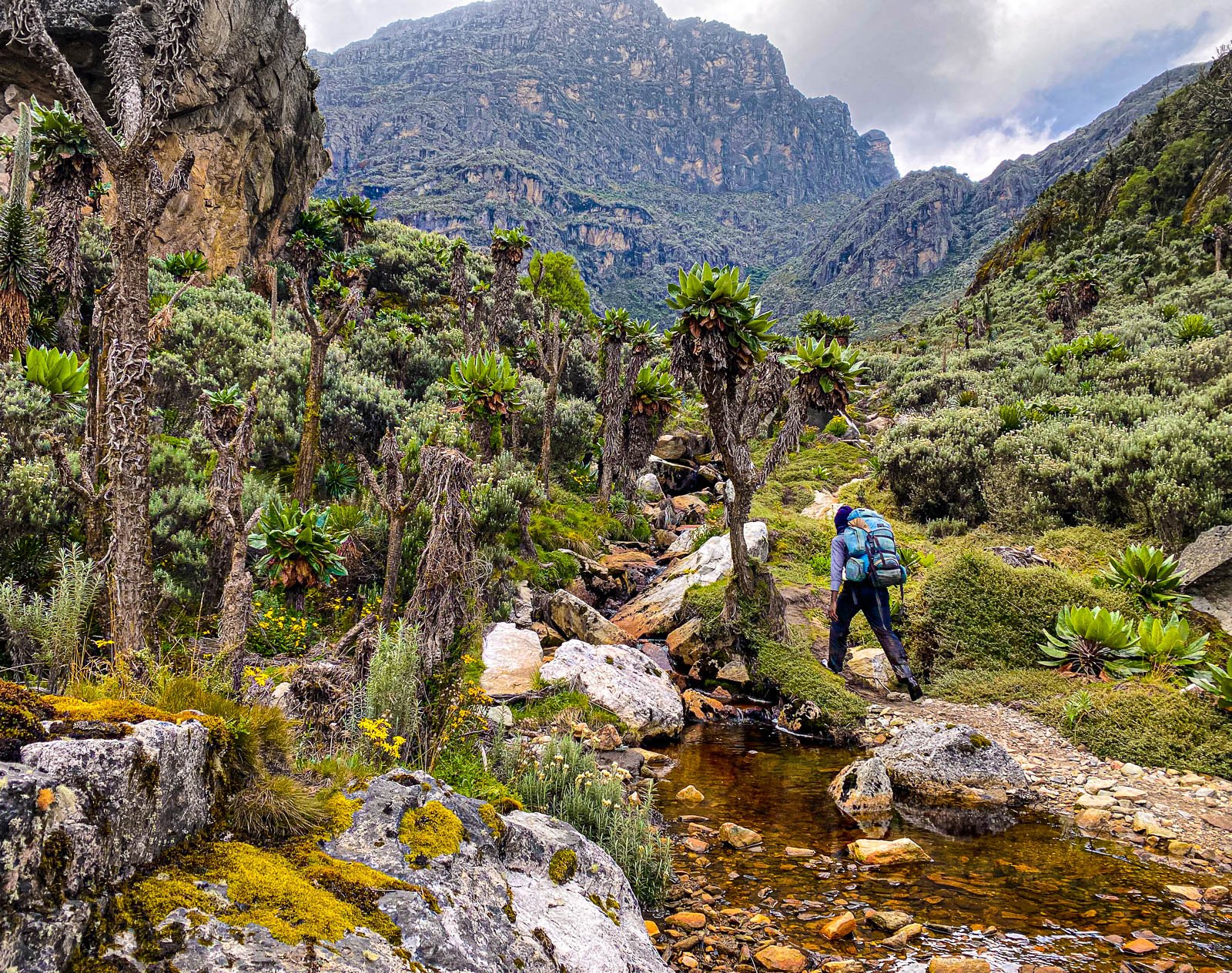
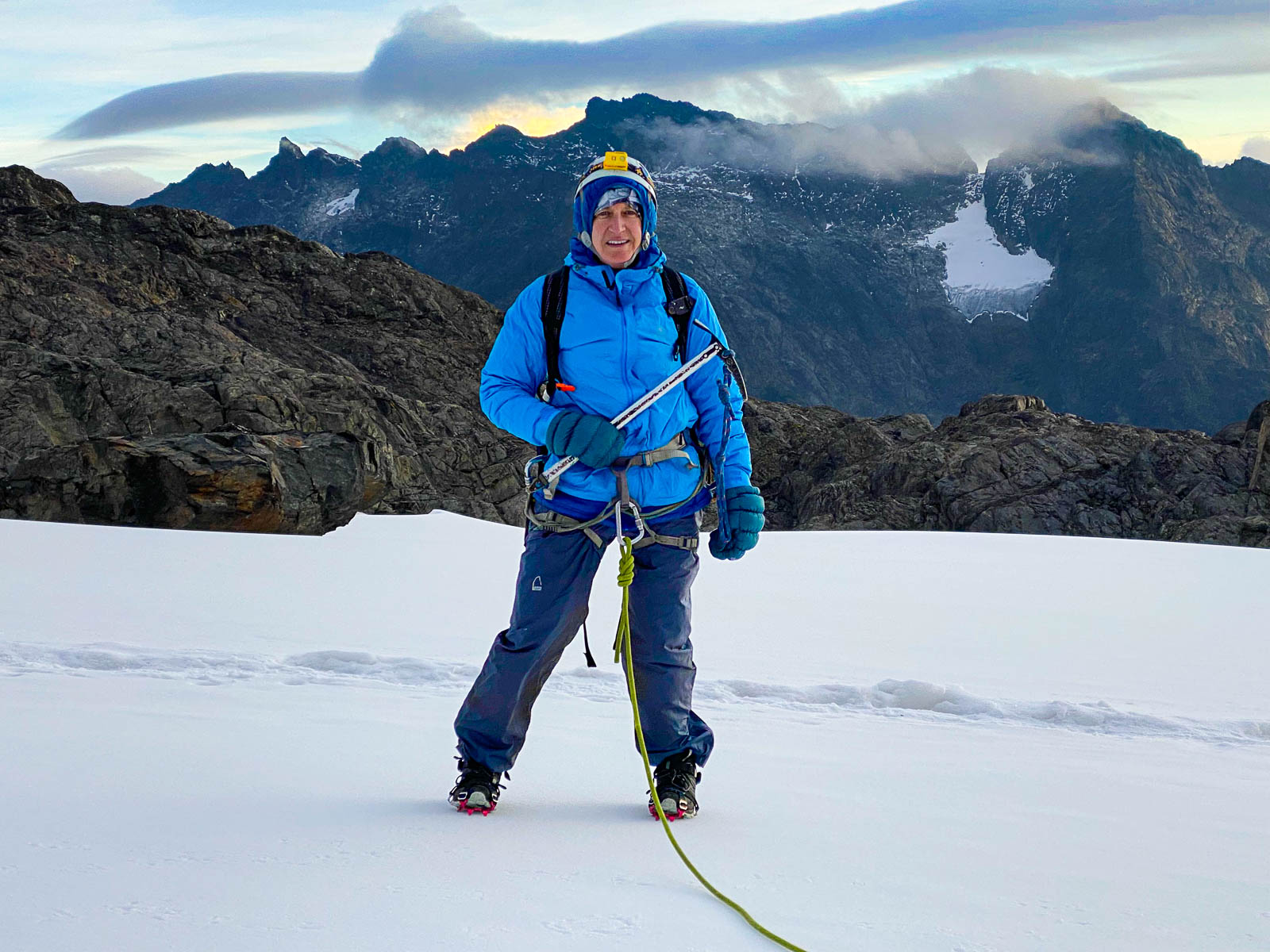
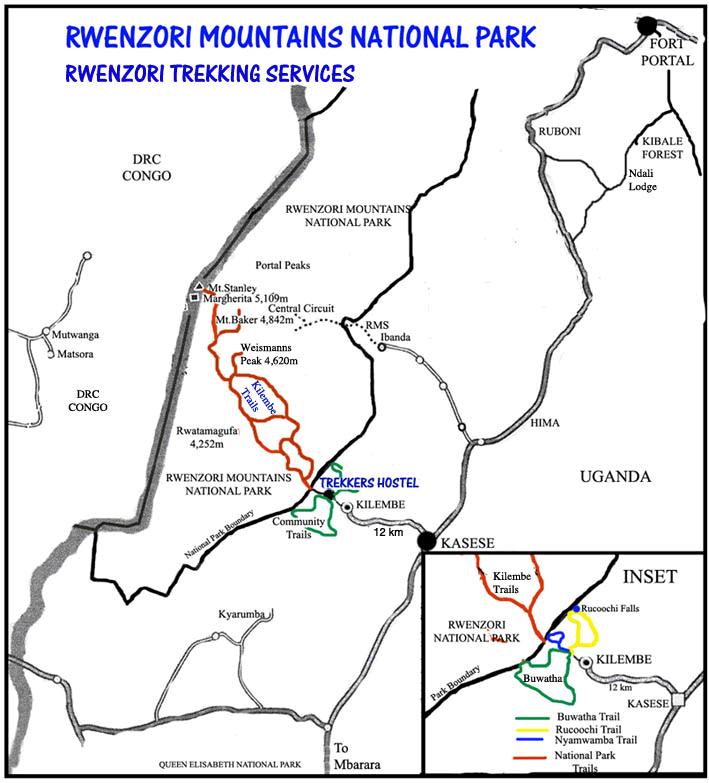
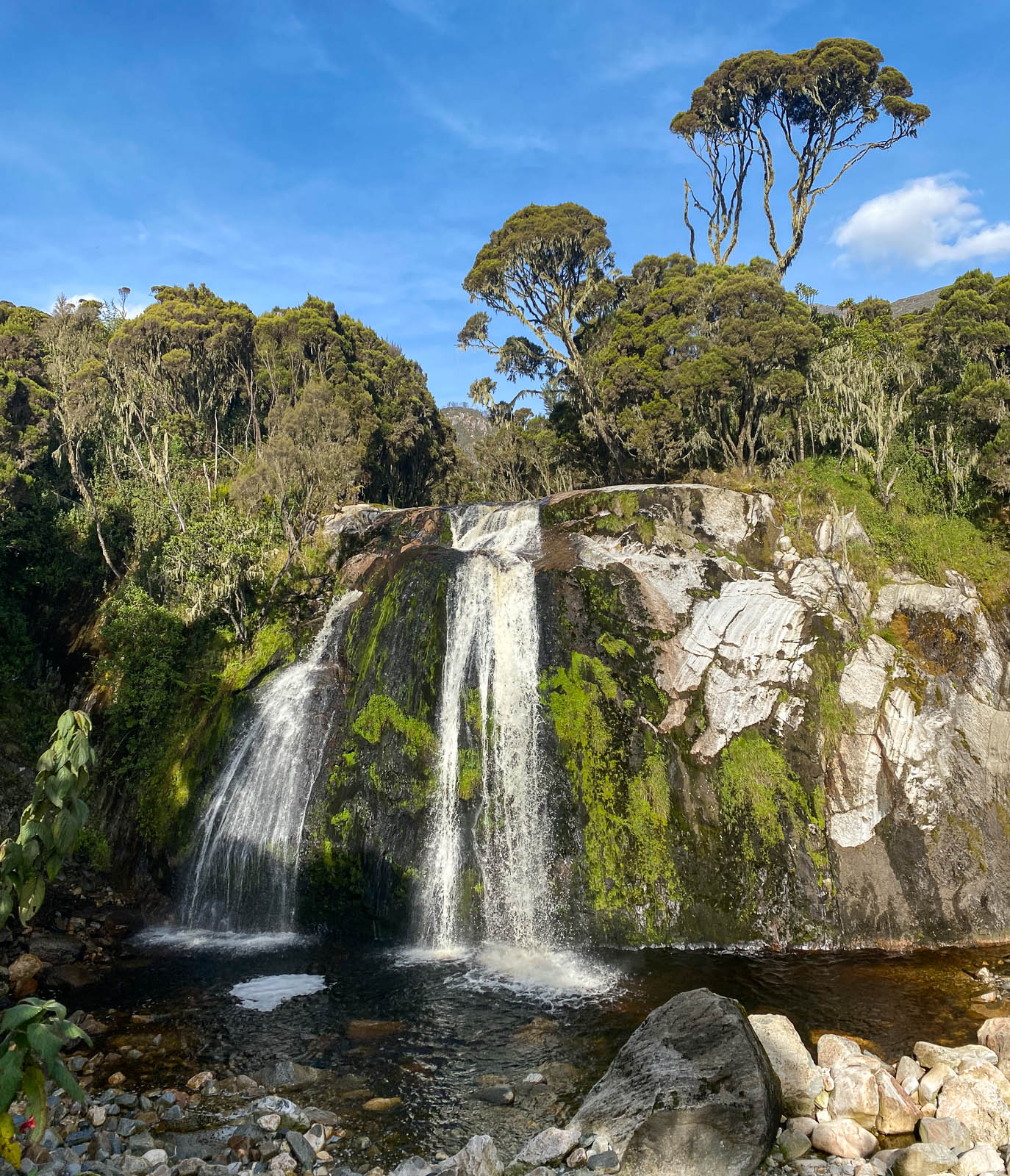
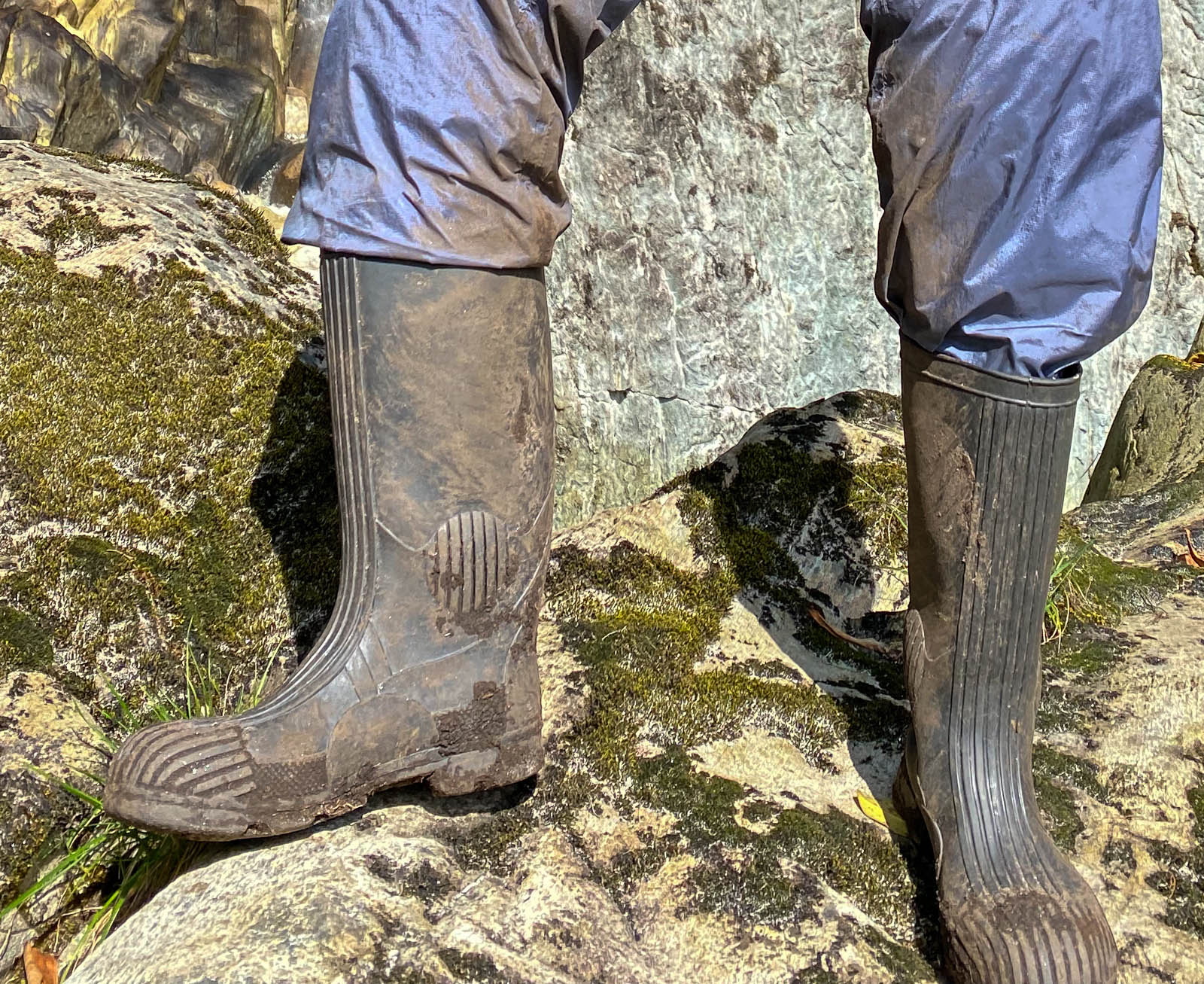
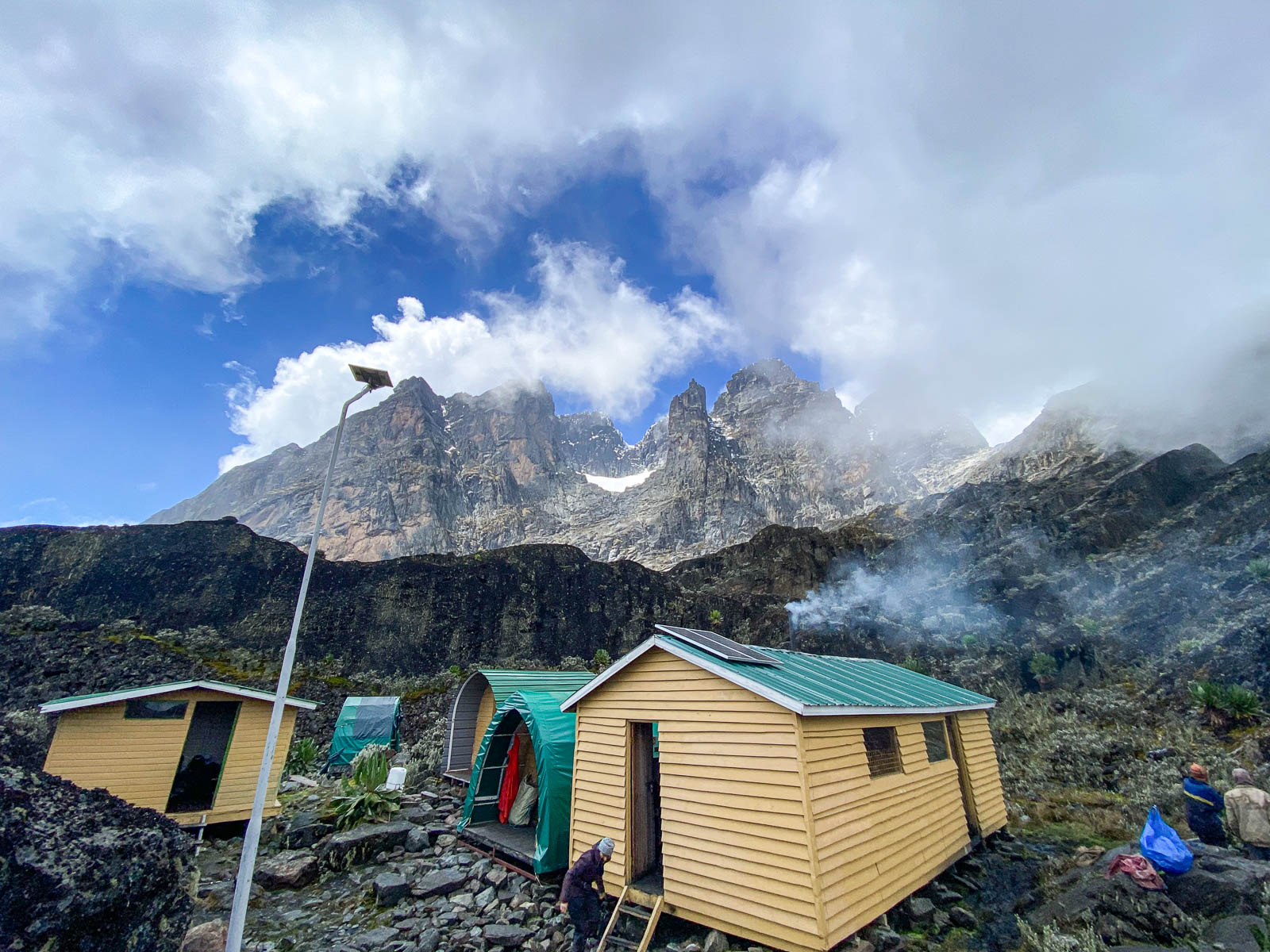
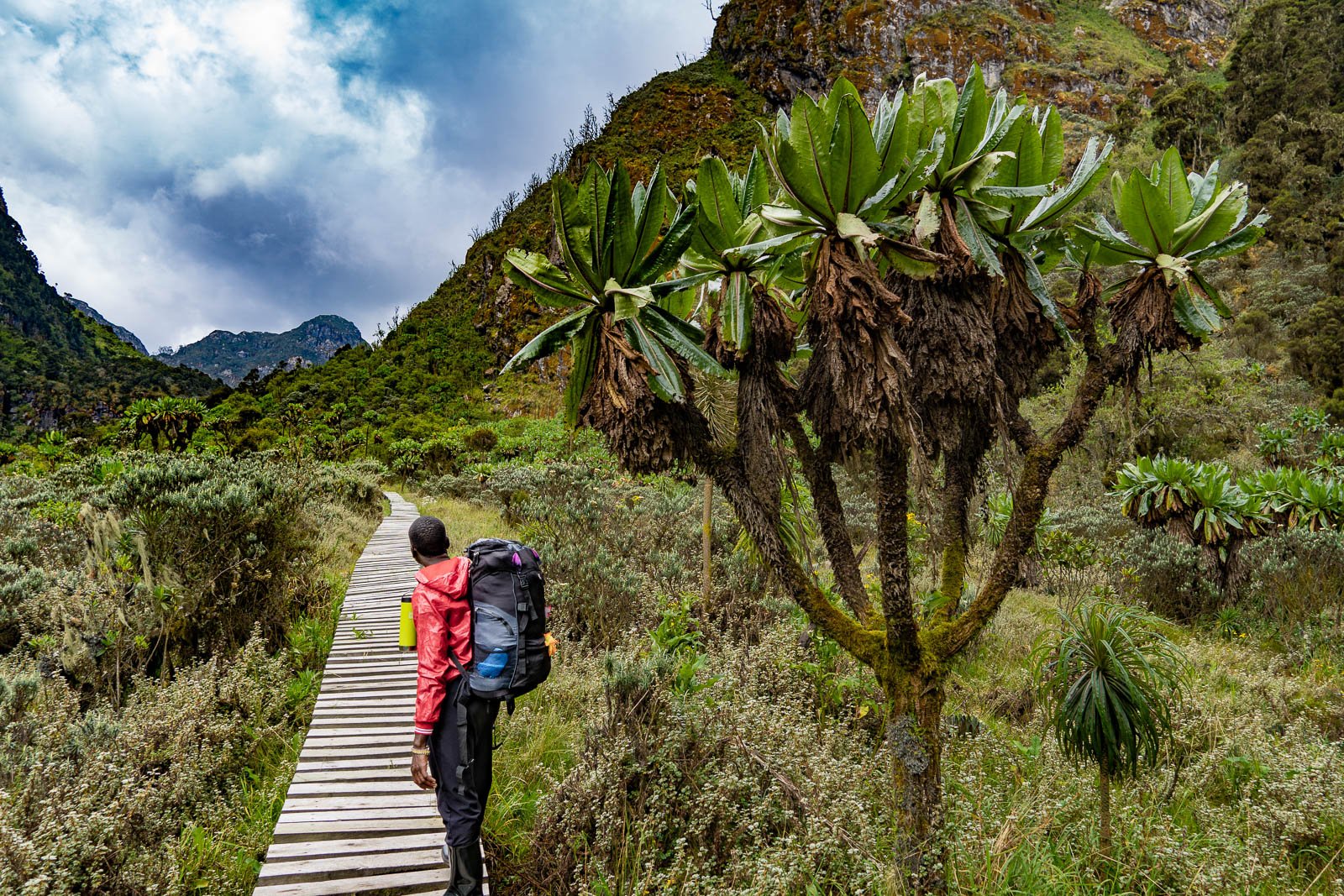
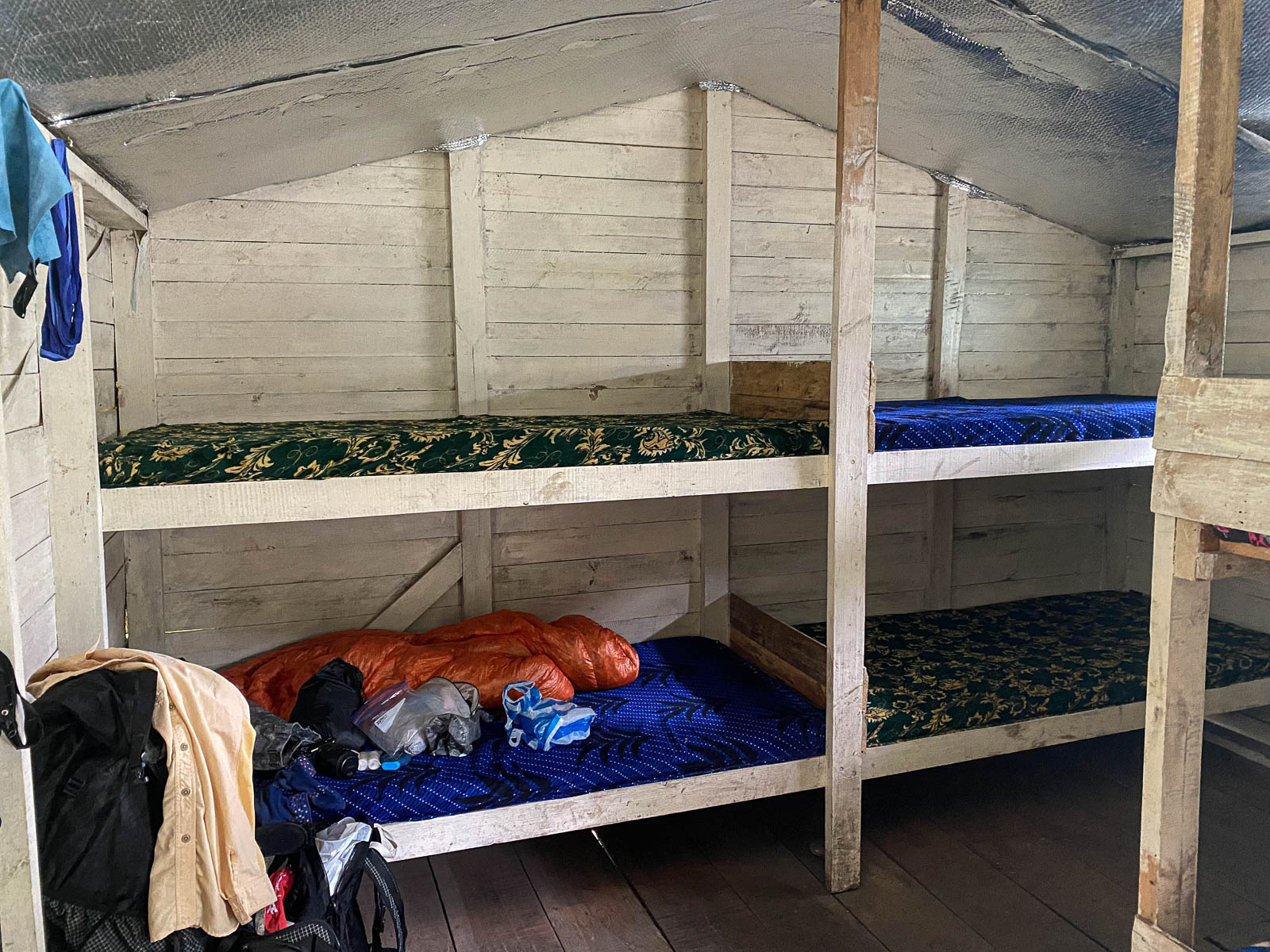
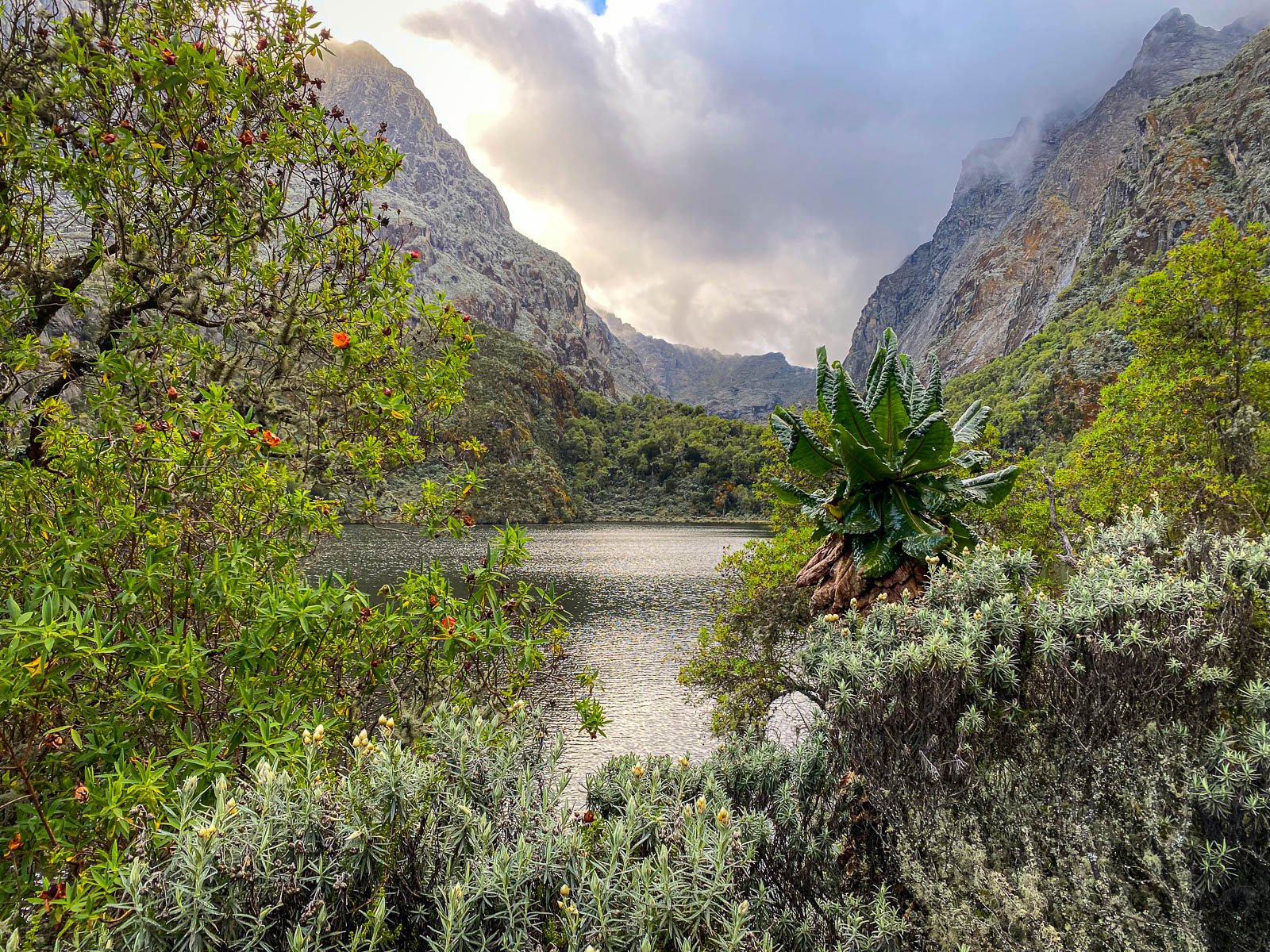
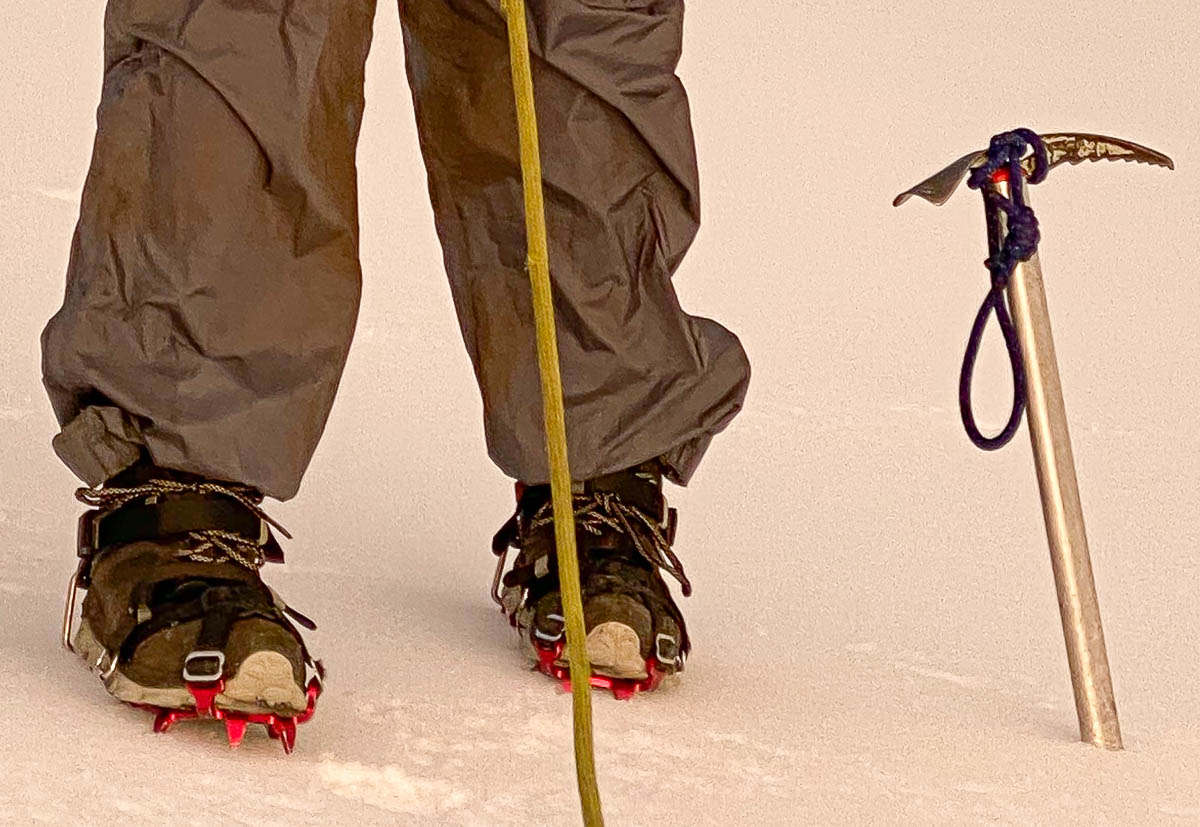
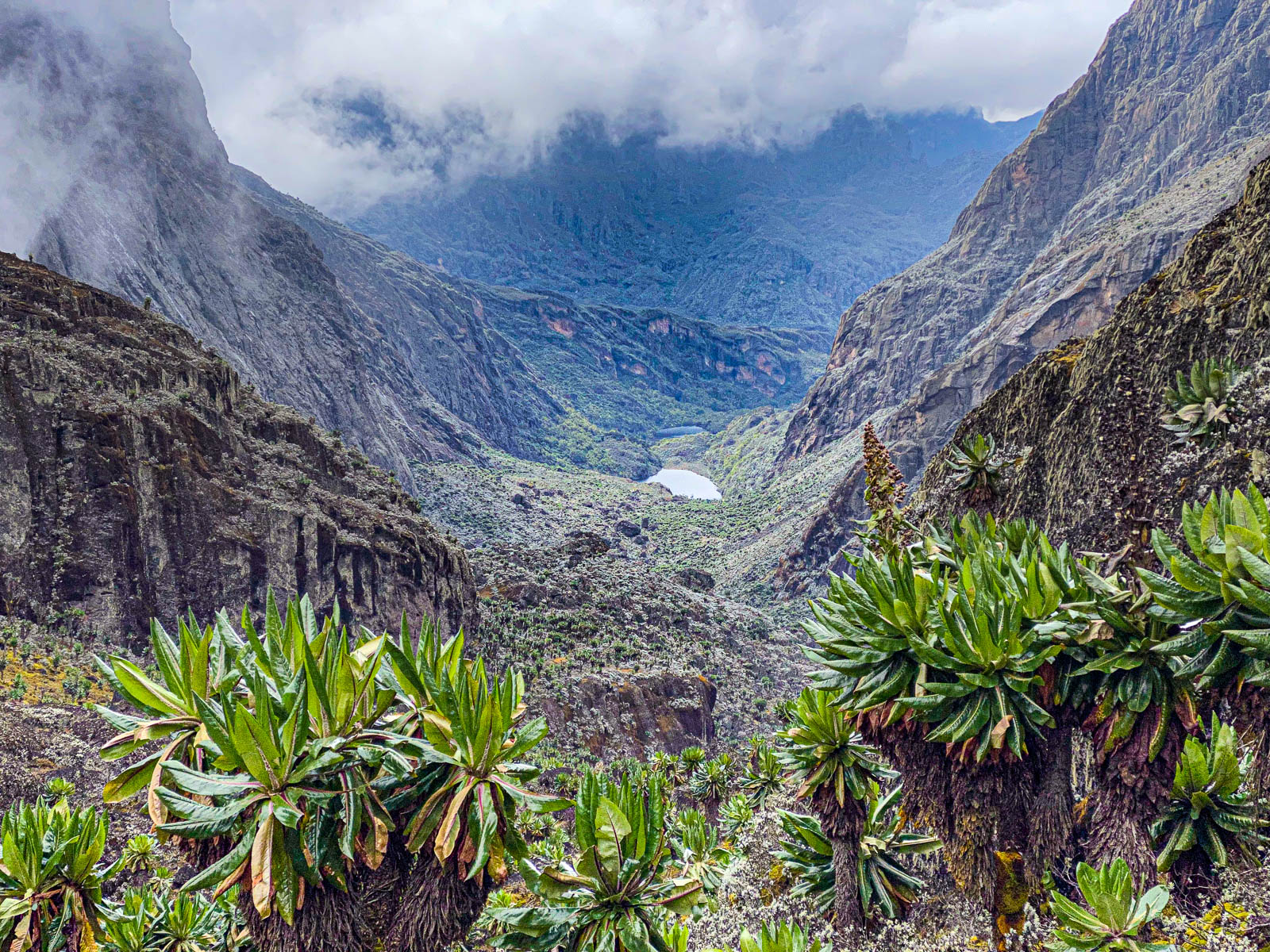
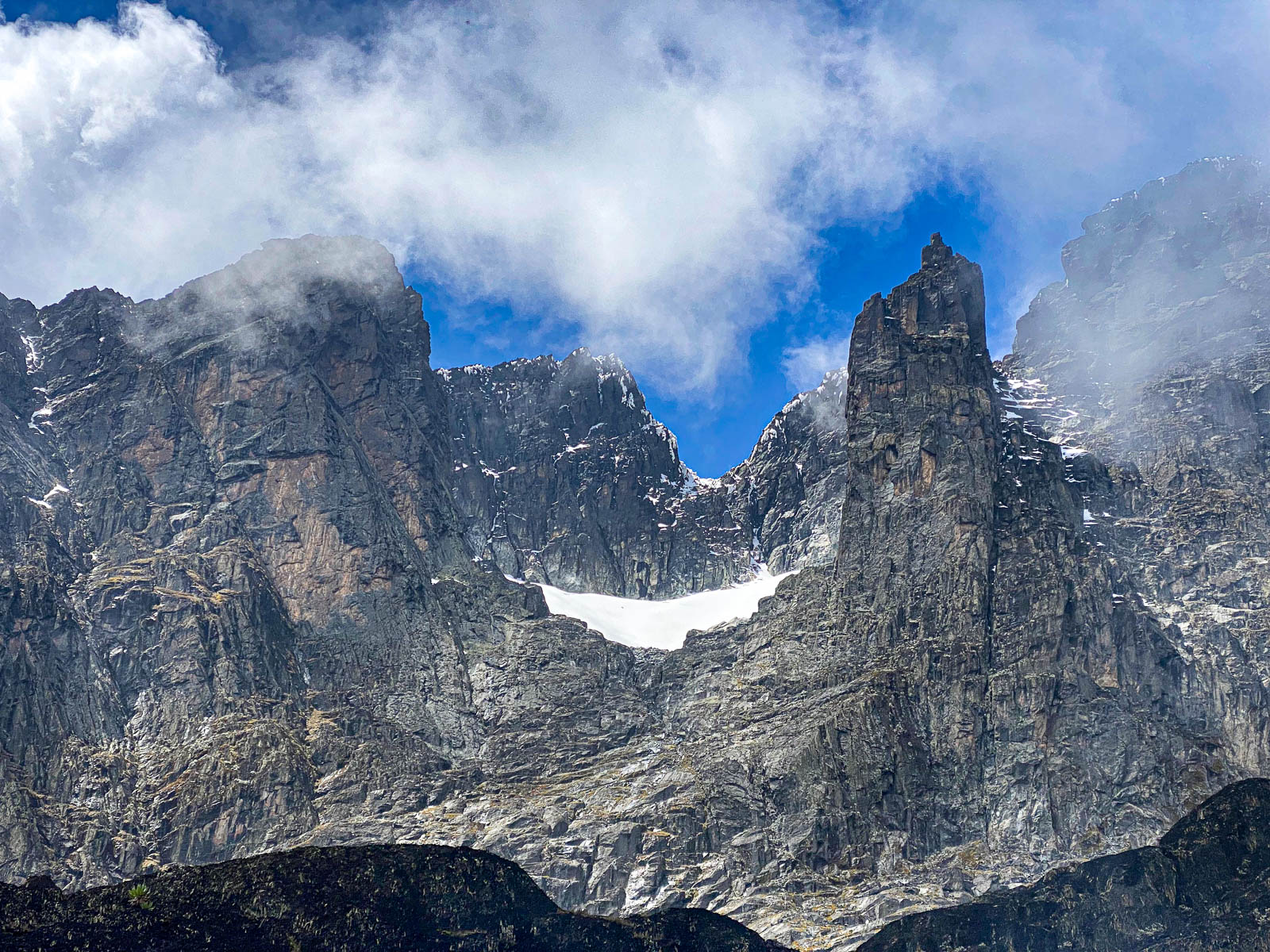
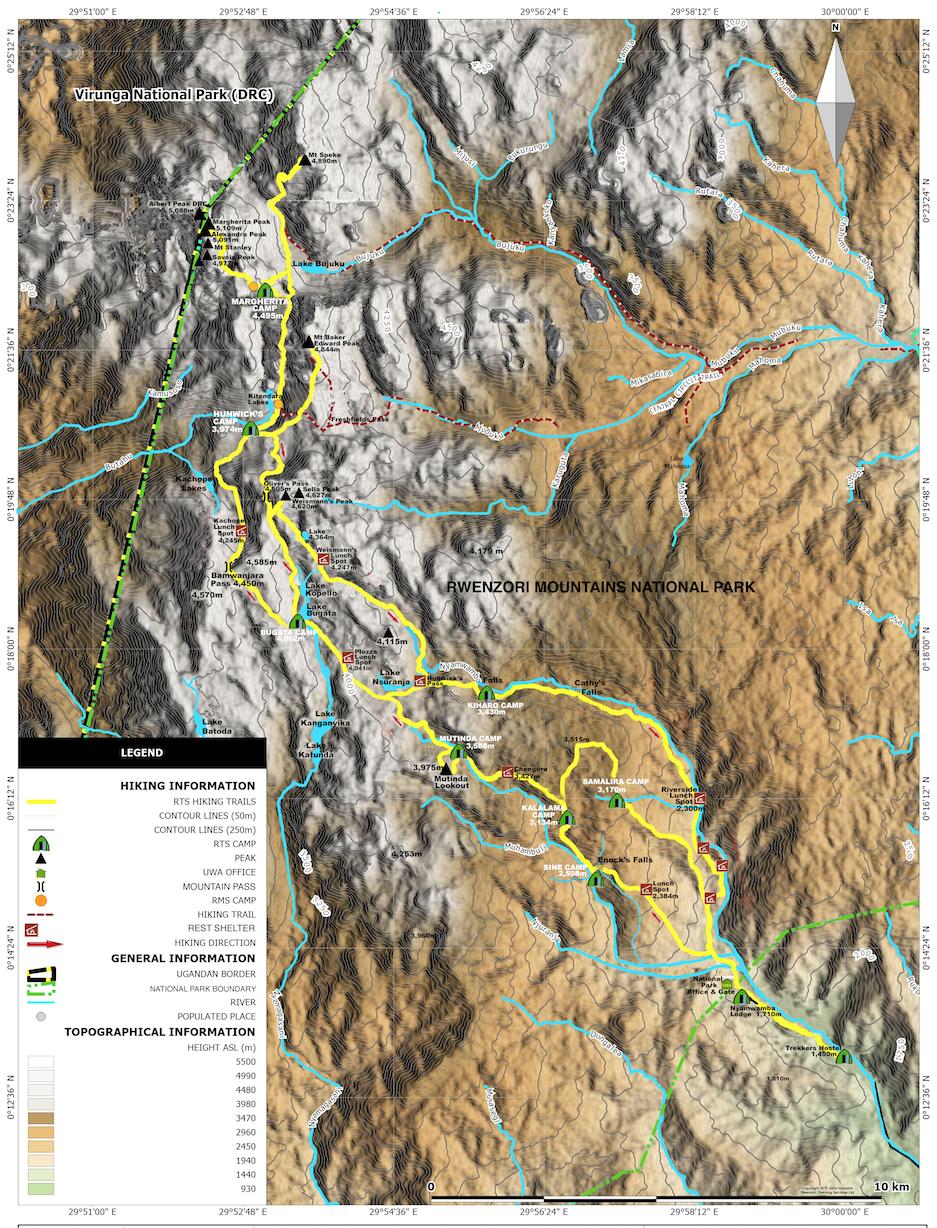
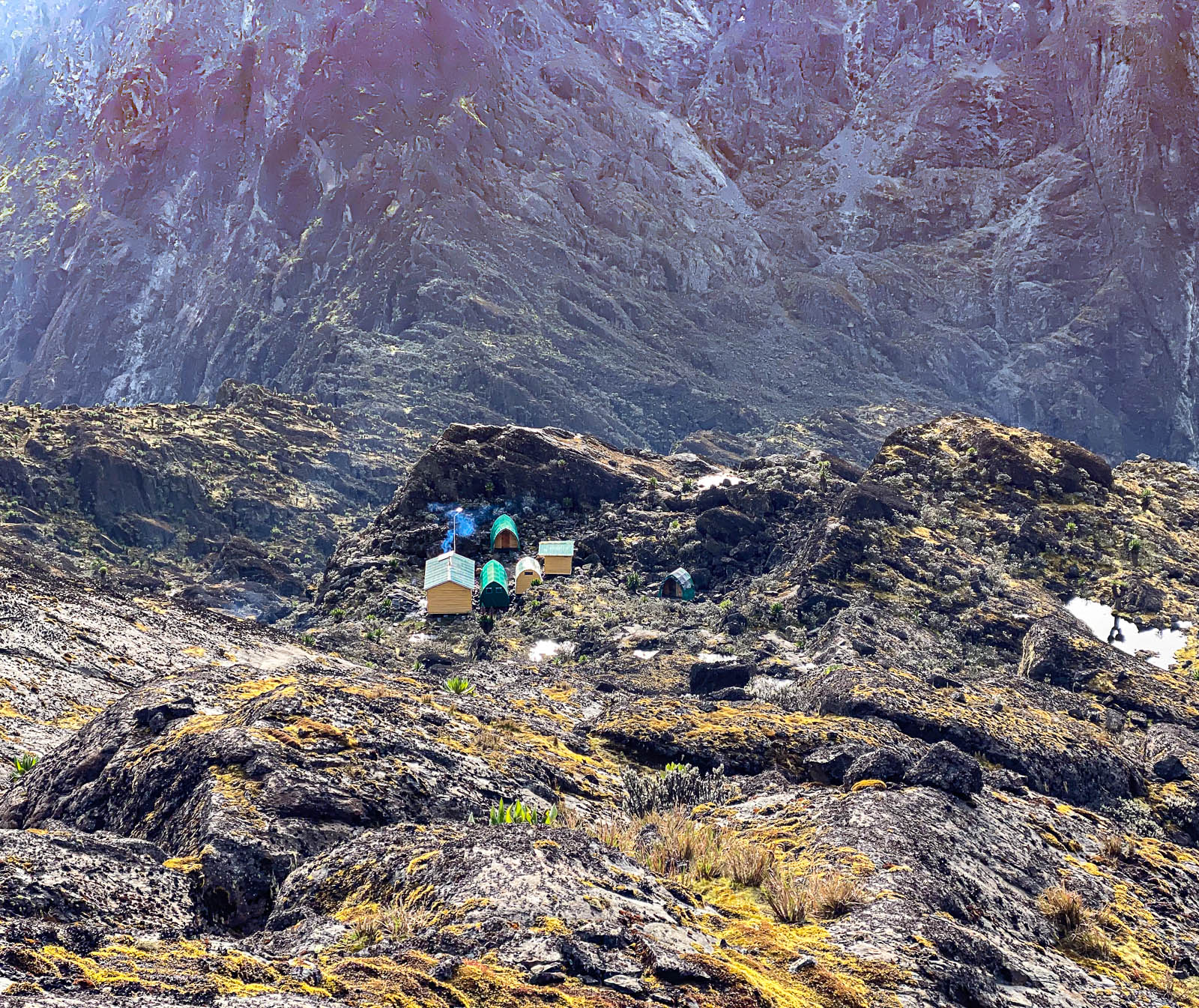


Share this entry